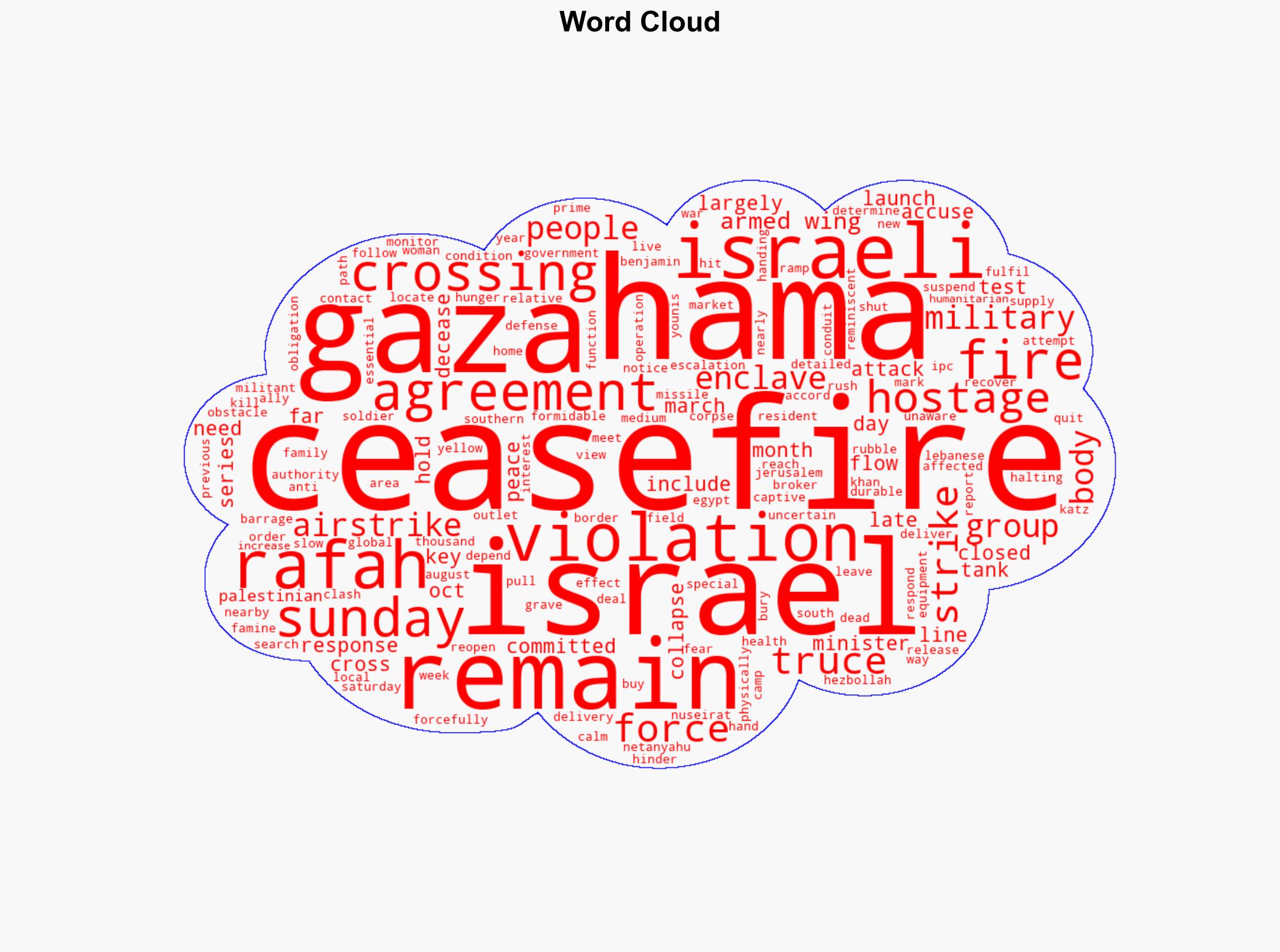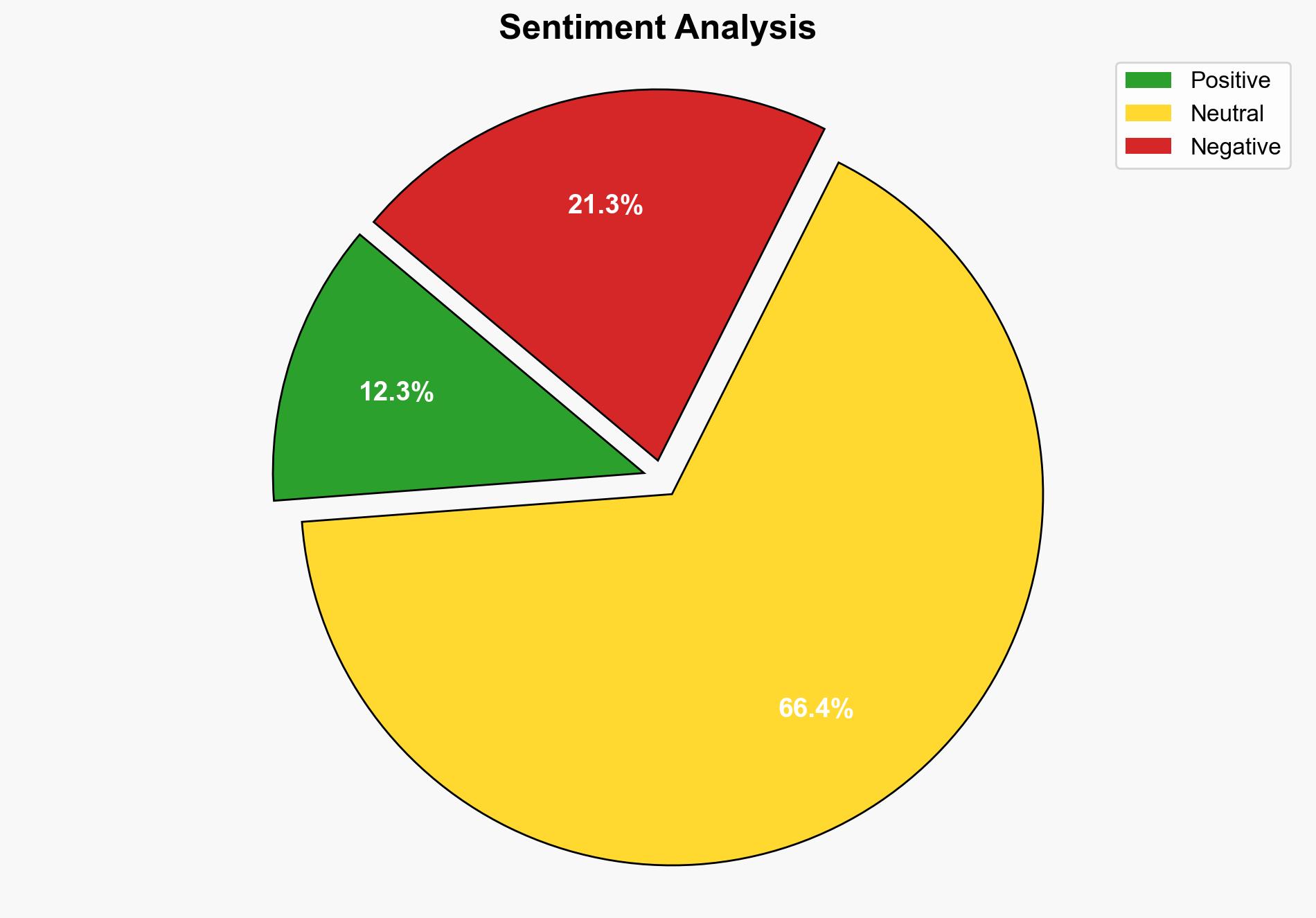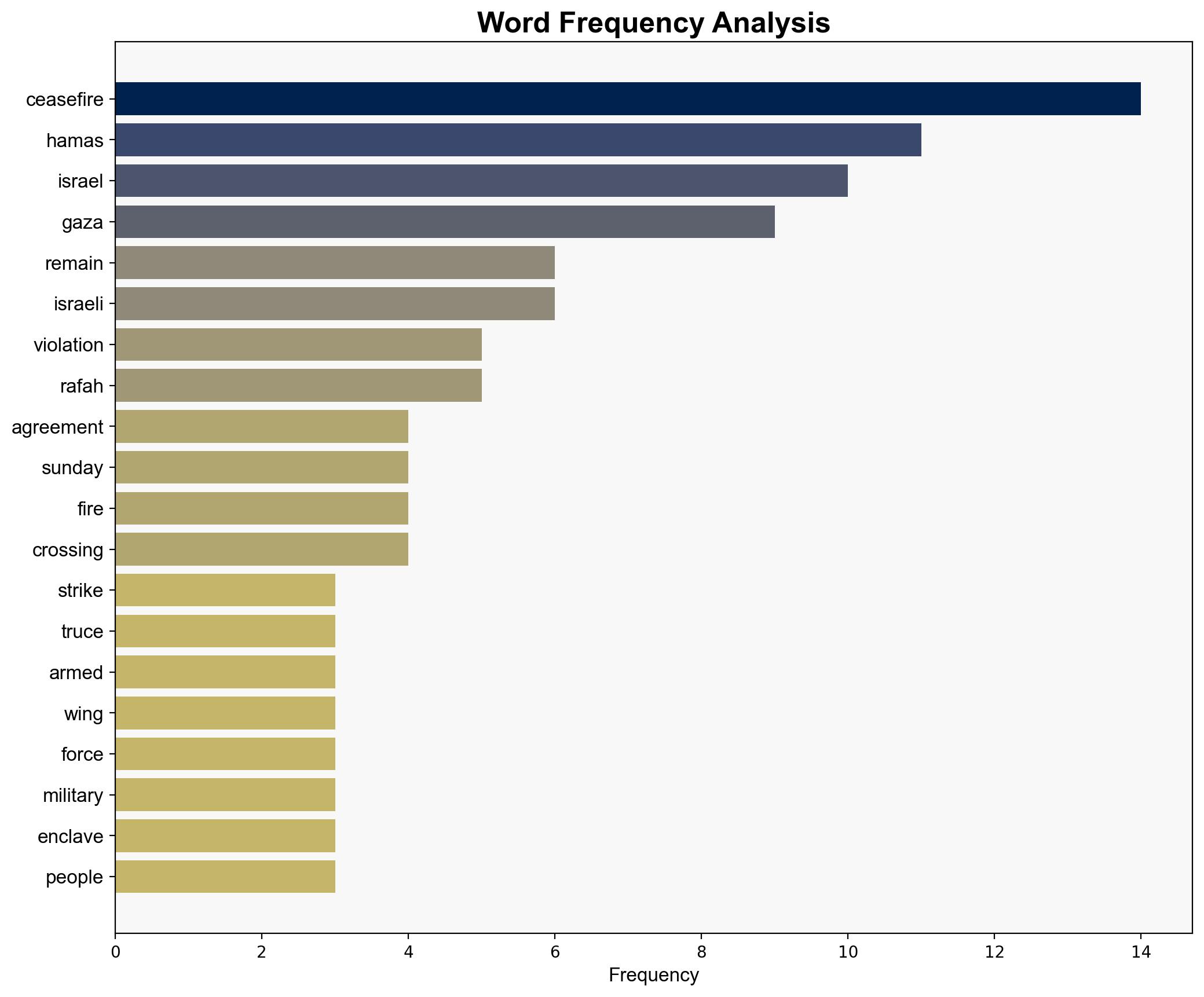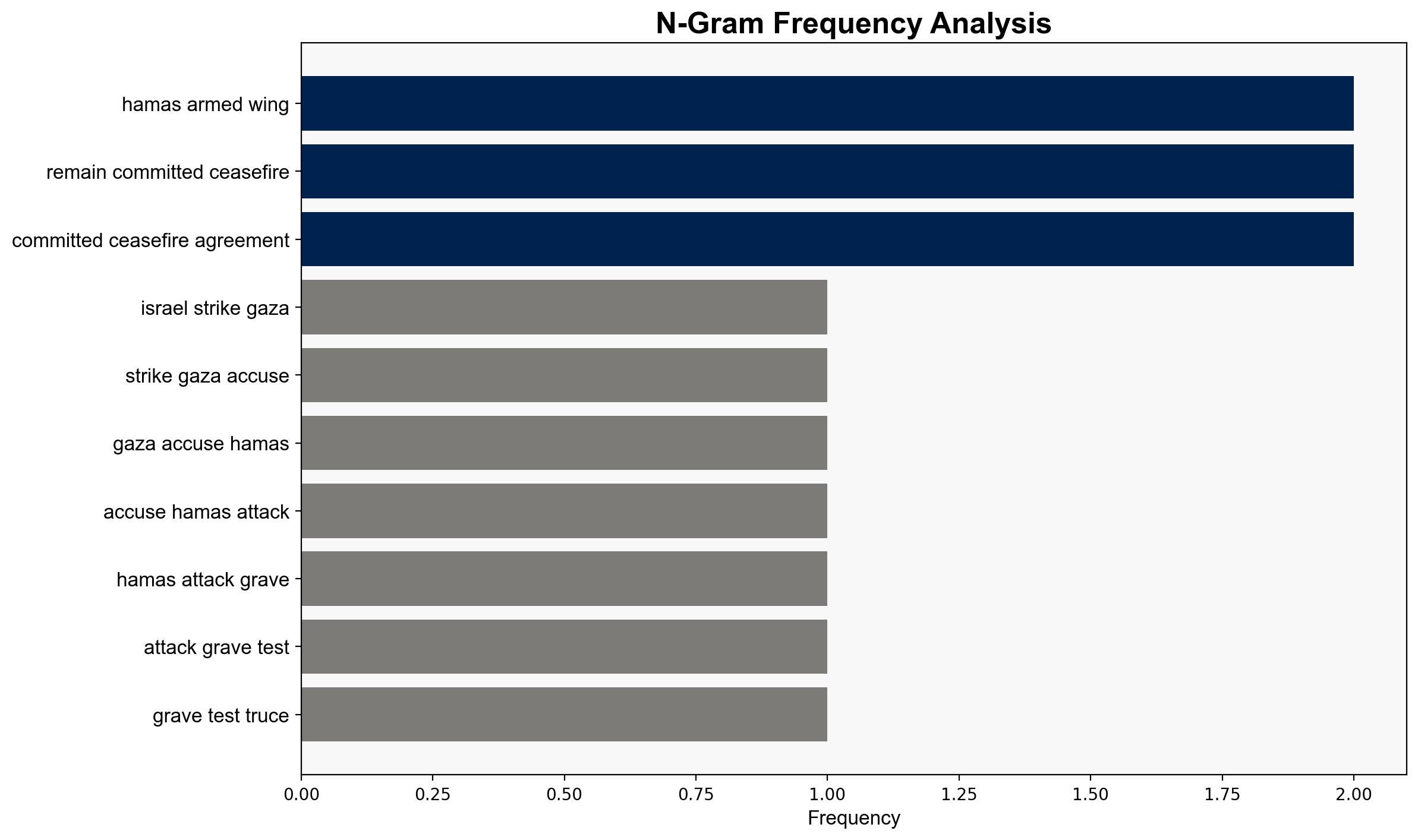Israeli military launches attack on Gaza Israeli media reports – CNA
Published on: 2025-10-19
Intelligence Report: Israeli military launches attack on Gaza Israeli media reports – CNA
1. BLUF (Bottom Line Up Front)
The most supported hypothesis suggests that the Israeli military’s actions are a strategic response to perceived violations of the ceasefire by Hamas, aimed at maintaining deterrence. Confidence level: Moderate. Recommended action: Engage in diplomatic efforts to reinforce the ceasefire and prevent further escalation.
2. Competing Hypotheses
Hypothesis 1: The Israeli military strikes are a direct response to Hamas’s violations of the ceasefire, intended to deter further aggression and maintain security. This hypothesis is supported by reports of anti-tank missile fire from Hamas and the Israeli Prime Minister’s directive for a forceful response.
Hypothesis 2: The Israeli military actions are part of a broader strategy to pressure Hamas into compliance with ceasefire terms, possibly leveraging the situation to gain political or strategic advantage. This is suggested by the timing of the strikes and the suspension of essential supplies to Gaza, which could be aimed at coercing Hamas into concessions.
3. Key Assumptions and Red Flags
– **Assumptions:** Both hypotheses assume that the reported violations by Hamas are accurate and that Israel’s response is proportionate.
– **Red Flags:** The lack of independent verification of the ceasefire violations and potential bias in media reporting could skew interpretations. The complexity of the ceasefire terms and their enforcement mechanisms are not fully detailed, leaving room for misinterpretation.
4. Implications and Strategic Risks
The continuation of military actions risks escalating into a broader conflict, potentially destabilizing the region further. Economic impacts include disruption of essential supplies to Gaza, exacerbating humanitarian conditions. Geopolitically, this could strain Israel’s relations with neighboring countries and international stakeholders. The psychological impact on civilians in both regions could fuel further animosity and radicalization.
5. Recommendations and Outlook
- Engage international mediators to reinforce the ceasefire and ensure compliance from both parties.
- Increase monitoring and verification mechanisms to provide unbiased assessments of ceasefire violations.
- Scenario Projections:
- Best Case: Successful diplomatic intervention leads to a reinforced ceasefire and gradual de-escalation.
- Worst Case: Escalation into a full-scale conflict, drawing in regional actors and increasing civilian casualties.
- Most Likely: Continued intermittent skirmishes with periodic diplomatic efforts to stabilize the situation.
6. Key Individuals and Entities
– Benjamin Netanyahu
– Hamas armed wing
– Local health authorities in Gaza
7. Thematic Tags
national security threats, regional focus, ceasefire dynamics, conflict escalation




